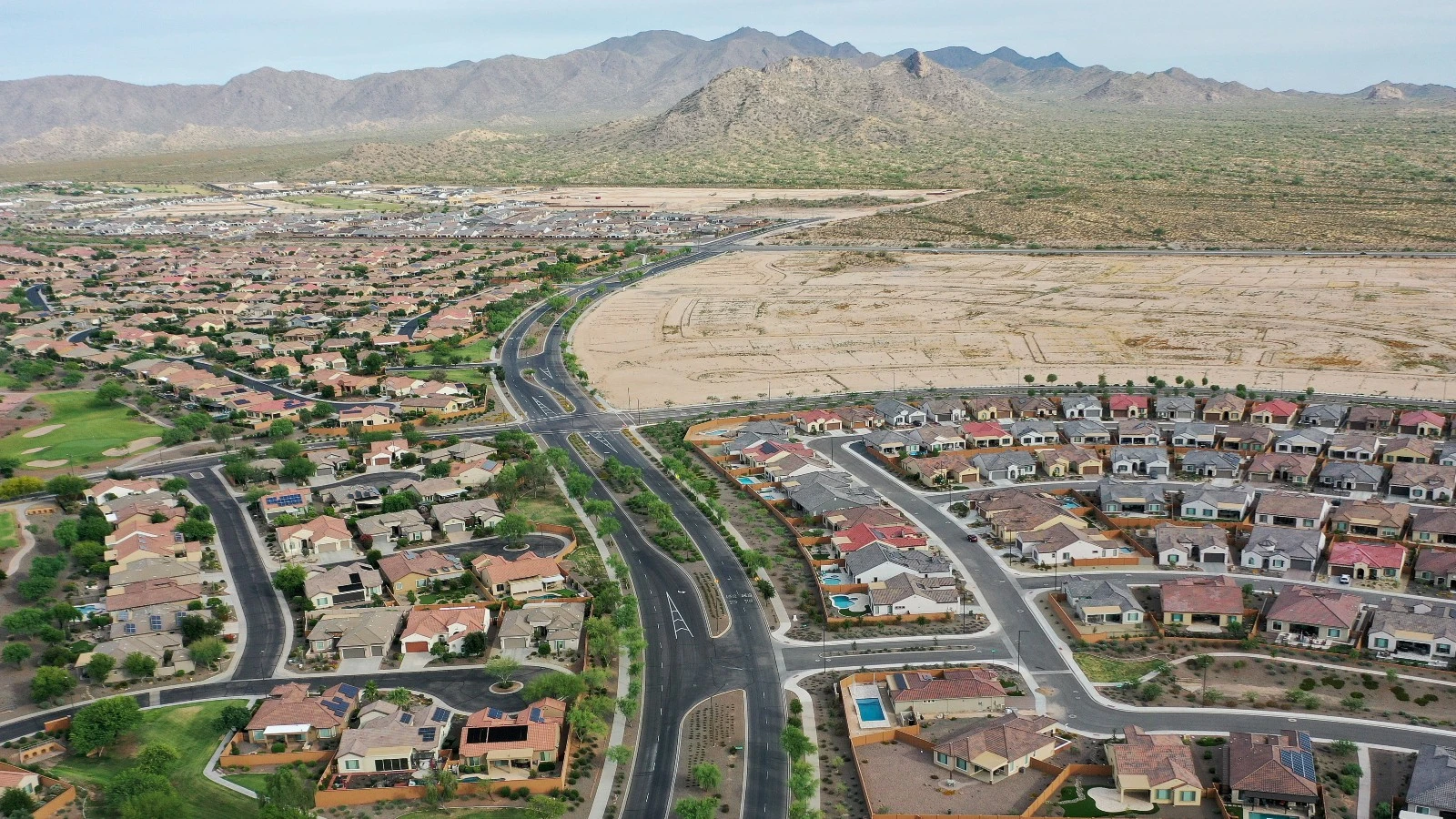This story was originally published by The Guardian and is reproduced here as part of the Climate Desk collaboration.
Arizona, stressed by years of drought, has declared its house-building boom will have to be curbed due to a lack of water, but one of its fastest-growing cities is refusing to give up its relentless march into the desert — even if it requires constructing a pipeline that would bring water across the border from Mexico.
The population of Buckeye, located 35 miles west of Phoenix, has doubled over the past decade to just under 120,000, and it is now priming itself to eventually become one of the largest cities in the U.S. West. The city’s boundaries are vast — covering an area stretching out into the Sonoran Desert that would encompass two New York Cities — and so are its ambitions.
Buckeye expects to one day contain as many as 1.5 million people, rivaling or even surpassing Phoenix — the sixth largest city in the U.S. that uses roughly 2 billion gallons of water a day — by sprawling out the tendrils of suburbia, with its neat lawns, snaking roads, and large homes, into the baking desert.
Arizona’s challenging water situation appears a major barrier to such hopes, however. In June, the state announced that new uses of its groundwater have essentially hit a limit, placing restrictions on house building, just a few months after the state lost a fifth of its water allocation from the ailing Colorado River.
There isn’t enough water beneath Buckeye to support homes not already being built, Arizona’s water department has said. But the city is embarking upon an extraordinary scramble to find water from other sources — by recycling it, purchasing it, or importing it — to maintain the sort of hurtling growth that continues to propel the U.S. West even in an era of climate crisis.
“Personally, my view is that we are still full steam ahead,” said Eric Orsborn, Buckeye’s ebullient mayor. Orsborn said he understands the state has to be “really careful” with water resources but that the city is exploring “options to keep us going and allow us to continue to grow at the rate that we want to grow.”
Some of the grander options are ambitious to the point of appearing outlandish, such as a plan to bring desalinated seawater from Mexico to Arizona via a lengthy, uphill pipeline. Arizona may, instead, pipe in water west from California, or from 1,000 miles east, from the Missouri River. Buckeye has already shown it is prepared to spend big to achieve its dreams — in January the city council agreed to spend $80 million for a single acre of nearby land, an area smaller than a football pitch, just to secure its attached water rights.
“We’ll be as big or larger than Phoenix, ultimately — we don’t have to have all that water solved today,” Orsborn said in city hall, which itself may have to be upsized to deal with Buckeye’s growth. On his office wall is a map of the vast expanse of untouched desert that sits within the city’s voluminous territory.
“What we need to figure out is what’s that next crazy idea that’s out there,” said the mayor, who also owns a construction company. “We’re just hustling to get to that point, to keep things moving along.”
Perhaps the most “crazy” of the ideas is the one that would involve building a desalination plant in the Mexican town of Puerto Peñasco, perched on the edge of the Gulf of California, to suck up seawater and then send the treated water in a pipeline several hundred miles north to Arizona. Much of the pipeline’s proposed route is uphill and will traverse an international border, a federally protected area famed for its cactus and several small towns.
The Phoenix area could easily accommodate several times as many people without increasing water use by pursuing a dense, transit oriented development strategy. But I guess that’s not the American way.
how would a much denser population not need more water?
Most water is used for landscaping which would probably decrease as lawns are replaced with other land use. Indoor water use would increase but only makes up a fraction of water use. I don’t know exactly how this would shake out but my instinct is it would more or less even out.
looks like landscaping accounts for about 50% of residential water usage. a good point, thanks.
The numbers I saw were more like 70% but probably doesn’t change the math too much either way.
I wonder how climate change will affect this area and if they’ve given any thought to that.
Leopards ate their faces or something idk
No sustainable water, no growth.
But of course, what’s reality to stop you when you need more tax revenue to look good come election time?
deleted by creator






